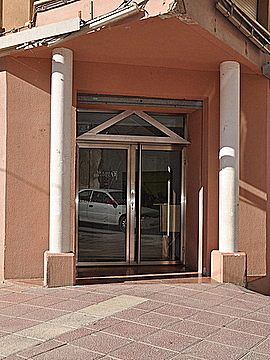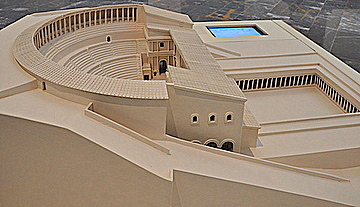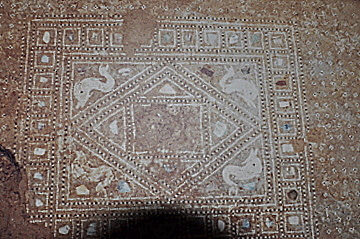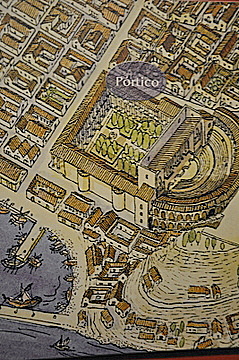- Region
- Águilas
- Alhama de Murcia
- Jumilla
- Lorca
- Los Alcázares
- Mazarrón
- San Javier
-
ALL AREAS & TOWNS
- AREAS
- SOUTH WEST
- MAR MENOR
- MURCIA CITY & CENTRAL
- NORTH & NORTH WEST
- TOWNS
- Abanilla
- Abarán
- Aguilas
- Alamillo
- Alcantarilla
- Aledo
- Alhama de Murcia
- Archena
- Balsicas
- Blanca
- Bolnuevo
- Bullas
- Cañadas del Romero
- Cabo de Palos
- Calasparra
- Camping Bolnuevo
- Campo De Ricote
- Camposol
- Canada De La Lena
- Caravaca de la Cruz
- Cartagena
- Cehegin
- Ceuti
- Cieza
- Condado de Alhama
- Corvera
- Costa Cálida
- Cuevas De Almanzora
- Cuevas de Reyllo
- El Carmoli
- El Mojon
- El Molino (Puerto Lumbreras)
- El Pareton / Cantareros
- El Raso
- El Valle Golf Resort
- Fortuna
- Fuente Alamo
- Hacienda del Alamo Golf Resort
- Hacienda Riquelme Golf Resort
- Isla Plana
- Islas Menores & Mar de Cristal
- Jumilla
- La Azohia
- La Charca
- La Manga Club
- La Manga del Mar Menor
- La Pinilla
- La Puebla
- La Torre
- La Torre Golf Resort
- La Unión
- Las Palas
- Las Ramblas
- Las Ramblas Golf
- Las Torres de Cotillas
- Leiva
- Librilla
- Lo Pagan
- Lo Santiago
- Lorca
- Lorquí
- Los Alcázares
- Los Balcones
- Los Belones
- Los Canovas
- Los Nietos
- Los Perez (Tallante)
- Los Urrutias
- Los Ventorrillos
- Mar De Cristal
- Mar Menor
- Mar Menor Golf Resort
- Mazarrón
- Mazarrón Country Club
- Molina de Segura
- Moratalla
- Mula
- Murcia City
- Murcia Property
- Pareton
- Peraleja Golf Resort
- Perin
- Pilar de la Horadada
- Pinar de Campoverde
- Pinoso
- Playa Honda
- Playa Honda / Playa Paraíso
- Pliego
- Portmán
- Pozo Estrecho
- Puerto de Mazarrón
- Puerto Lumbreras
- Puntas De Calnegre
- Region of Murcia
- Ricote
- Roda
- Roldan
- Roldan and Lo Ferro
- San Javier
- San Pedro del Pinatar
- Santiago de la Ribera
- Sierra Espuña
- Sucina
- Tallante
- Terrazas de la Torre Golf Resort
- Torre Pacheco
- Totana
- What's On Weekly Bulletin
- Yecla


- EDITIONS:
 Spanish News Today
Spanish News Today
 Alicante Today
Alicante Today
 Andalucia Today
Andalucia Today
The Muralla Bizantina, Cartagena, art gallery and archaeological site
The Muralla Bizantina also contains remains of the Roman Theatre in its basement
 This is an interesting location, and can be added into any Cartagena itinerary as it is both a very attractive art gallery which hosts some excellent exhibitions and a historical site.
This is an interesting location, and can be added into any Cartagena itinerary as it is both a very attractive art gallery which hosts some excellent exhibitions and a historical site.
Its located at the foot of the Roman Theatre, right next to an area which is fenced off from the public but which still contains unexcavated parts of the theatre complex and is housed in a building which has been built over the top of the original Portico for the Roman theatre, although archaeologists didn't realise that that was what they had discovered when it was originally excavated back in 1983.
The site was first uncovered before the Roman Theatre was found and archaeologists were unsure what the remains related to, although it was obvious that a Roman house from the 1st century BC had been demolished and another structure built over the top of it, the structure being huge foundations for a very substantial building. The stone used in these foundations was Roman but  they attributed the construction to the Byzantines, dating it to around 500 years later, which is when the latter were known to have built a citadel in this part of the town.
they attributed the construction to the Byzantines, dating it to around 500 years later, which is when the latter were known to have built a citadel in this part of the town.
(The Byzantines relate to a period in Roman history when the vast Roman Empire had crumbled and split into two parts, the Eastern part of the former empire ruled from Constantinople, its people becoming known as the Byzantines. By this point in history Cartagena had been abandoned by the Romans and become the target of raiding barbarians, although was briefly reoccupied by the Byzantians who attempted to retake Roman territories. See History of Cartagena Part 3 for a more substantial explanation).
It was only when the Roman theatre was found that the true picture became clear.
 The Romans had selected the position in which to build their new theatre for 3 reasons; first, because it would visually balance the city with the theatre on the west and the ampitheatre on the east, creating visual harmony, secondly because the alignment would protect the audience from the southerly winds, and thirdly as it would be cheaper and more efficient to build into the side of a hill and cut out of the rock, rather than bring in rock to build from the ground up.
The Romans had selected the position in which to build their new theatre for 3 reasons; first, because it would visually balance the city with the theatre on the west and the ampitheatre on the east, creating visual harmony, secondly because the alignment would protect the audience from the southerly winds, and thirdly as it would be cheaper and more efficient to build into the side of a hill and cut out of the rock, rather than bring in rock to build from the ground up.
The only problem was that several luxurious villas occupied their selected site, so they demolished the villas and laid the foundations for the colonnades of the new theatre over the houses, re-using their stone in the new construction.
 500 years later, the Bizantines knocked down the colonnades and re-used the stone to build their citadel over the top of the old Roman Theatre.
500 years later, the Bizantines knocked down the colonnades and re-used the stone to build their citadel over the top of the old Roman Theatre.
This is an excellent little picture because it shows how enormous the theatre complex actually was. The part which remains today is impressive now, but it must have been considerably more imposing 2000 years ago when accompanied by the gardens and colonnades.
Theres not a lot to see apart from an attractive section of tesserae floor with a dolphin design, although the foundations are pretty impressive, but it doesnt cost anything to get in and the exhibitions are usually excellent.
 Its only a 3 minute walk from the Plaza del Ayuntamiento, by the main port, so its a useful little place to know about if you want something to fill half an hour whilst waiting for a concert or an event.
Its only a 3 minute walk from the Plaza del Ayuntamiento, by the main port, so its a useful little place to know about if you want something to fill half an hour whilst waiting for a concert or an event.
If youre feeling particularly energetic, its interesting to start the morning by getting the panoramic lift (around 1 euro) up to the top of the Monte Concepcion, the highest of the 5 hills around which Cartagena was built and which had a temple on the top of it, and walk down to see the Theatre from above, then follow the trail down through the Parque Cornisas, to see the theatre close up from above, then down into Plaza del Ayuntamiento and visit the actual theatre itself.
From there its easy to walk back down and around the base of the theatre and visit the original Portico in the basement of this little gallery.
 Practicalities of visiting the Muralla Bizantina in Cartagena Spain
Practicalities of visiting the Muralla Bizantina in Cartagena Spain
The Exhibition space Muralla Bizantina is in Calle Doctor Martinez Tapia, 2.
Tel 968 50 79 66.
Opening times 10am to 1.30pm and from 5pm to 8.30pm from Tuesday to Saturday.
During the Cartagineses y Romanos fiestas:Tuesday to Saturday: 10am to 1.30pm.
Sunday and Bank Holiday closed.
CLICK HERE for map
Its not signposted from the street Calle de los Cuatro Santos, but just count the streets along to find it.
Disability Access?
The only main point to note is that whilst the gallery is accessible for those with limited mobility or wheelchairs, the archaeological remains are in a basement and can only be accessed via steps.
The display boards are in English as well as Spanish.
Would we recommend it?
Absolutely!






































